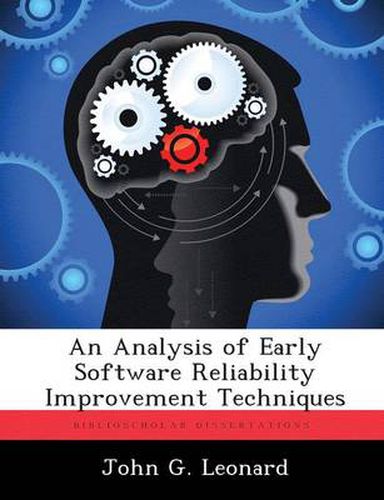Readings Newsletter
Become a Readings Member to make your shopping experience even easier.
Sign in or sign up for free!
You’re not far away from qualifying for FREE standard shipping within Australia
You’ve qualified for FREE standard shipping within Australia
The cart is loading…






This title is printed to order. This book may have been self-published. If so, we cannot guarantee the quality of the content. In the main most books will have gone through the editing process however some may not. We therefore suggest that you be aware of this before ordering this book. If in doubt check either the author or publisher’s details as we are unable to accept any returns unless they are faulty. Please contact us if you have any questions.
The research explores current early life cycle software reliability prediction models or techniques that can predict the reliability of software prior to writing code and a method for increasing or improving the reliability of software products early in the development life cycle. Five prediction models and two development techniques are examined. Each model is statically an alyzedin terms of availability of data early in the life cycle, ease of data collection, and whether the data is currently collected. One model and the two techniques satisfied requirements and were further analyzed for their ability to predict or improve software reliability. While the researchers offer no significant statistical results of the ability of the model to predict software reliability, important conclusions are drawn about the cost and time savings of using inspections as a means of improving the reliability of software. The results indicate that the current software development paradigm needs to be changed to use the Clean room Software Development Process for future software development.
$9.00 standard shipping within Australia
FREE standard shipping within Australia for orders over $100.00
Express & International shipping calculated at checkout
This title is printed to order. This book may have been self-published. If so, we cannot guarantee the quality of the content. In the main most books will have gone through the editing process however some may not. We therefore suggest that you be aware of this before ordering this book. If in doubt check either the author or publisher’s details as we are unable to accept any returns unless they are faulty. Please contact us if you have any questions.
The research explores current early life cycle software reliability prediction models or techniques that can predict the reliability of software prior to writing code and a method for increasing or improving the reliability of software products early in the development life cycle. Five prediction models and two development techniques are examined. Each model is statically an alyzedin terms of availability of data early in the life cycle, ease of data collection, and whether the data is currently collected. One model and the two techniques satisfied requirements and were further analyzed for their ability to predict or improve software reliability. While the researchers offer no significant statistical results of the ability of the model to predict software reliability, important conclusions are drawn about the cost and time savings of using inspections as a means of improving the reliability of software. The results indicate that the current software development paradigm needs to be changed to use the Clean room Software Development Process for future software development.